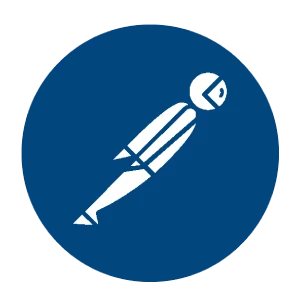


The client is a leading travel brand focused on reliable, pre-booked ground transfers. As demand grew, so did the need for a platform that is resilient, consistent across environments, and easier to evolve. The company engaged Eastern Enterprise to modernize a set of legacy PHP applications and prepare the foundation for sustained product velocity.
We started by understanding each application as it ran in the wild, what it depended on, what it configured at startup, and how it behaved under load. That meant mapping external services (databases, caches, storage, search, and shared filesystems), collecting environment configuration from EC2, and translating the existing Ansible setup into container-friendly conventions.
Each application received a Docker file and a lightweight startup script that mirrored the original Ansible tasks. Within Kubernetes, PHP ran together with Nginx in the same pod to preserve the serving model teams were accustomed to, while gaining the consistency of container images across staging and production. We introduced a standard Helm chart to keep application configuration clear and repeatable and to capture things like environment variables, resource boundaries, and persistent mounts.
Releases moved to a continuous model: GitHub Actions now builds and pushes images; Argo CD deploys to EKS in a controlled, auditable way. Staging environments gave developers a straightforward place to validate end-to-end behaviour before promoting changes. Finally, DNS updates through Route 53 completed the cutover with minimal disruption.

(Kubernetes)

Docker, Nginx + PHP-FPM in a shared pod

Helm for application charts, GitHub Actions for CI, Argo CD for continuous delivery

Amazon RDS, Amazon ElastiCache (Redis), Amazon S3, Amazon OpenSearch, Amazon EFS

Route 53 for DNS; IAM roles for secure access to services
Consistency across environments: The same container image runs in staging and production, reducing release surprises.
Faster, safer releases: CI/CD pipelines make build, test, and deploy routine and auditable.
Operational resilience: Kubernetes improves self-healing and recovery, replacing manual instance management.
Security by default: Immutable images, scoped IAM access, and managed secrets strengthen the baseline.
Developer focus: Teams validate end-to-end behaviour in stable staging before promotion.
Affordable & cost-effective: Pods share node resources for higher utilization; right-sized requests/limits and HPA reduce over-provisioning and EC2 sprawl.
Scalability on demand: Applications scale out and in quickly to match traffic without service disruption.
Robust health checks: Readiness and liveness probes support safe rollouts, rapid detection of issues, and automated recovery.
| Cookie | Duration | Description |
|---|---|---|
| __cf_bm | 1 hour | This cookie, set by Cloudflare, is used to support Cloudflare Bot Management. |
| _cfuvid | session | Calendly sets this cookie to track users across sessions to optimize user experience by maintaining session consistency and providing personalized services |
| cookielawinfo-checkbox-advertisement | 1 year | Set by the GDPR Cookie Consent plugin, this cookie records the user consent for the cookies in the "Advertisement" category. |
| cookielawinfo-checkbox-analytics | 11 months | This cookie is set by GDPR Cookie Consent plugin. The cookie is used to store the user consent for the cookies in the category "Analytics". |
| cookielawinfo-checkbox-functional | 11 months | The cookie is set by GDPR cookie consent to record the user consent for the cookies in the category "Functional". |
| cookielawinfo-checkbox-necessary | 11 months | This cookie is set by GDPR Cookie Consent plugin. The cookies is used to store the user consent for the cookies in the category "Necessary". |
| cookielawinfo-checkbox-others | 11 months | This cookie is set by GDPR Cookie Consent plugin. The cookie is used to store the user consent for the cookies in the category "Other. |
| cookielawinfo-checkbox-performance | 11 months | This cookie is set by GDPR Cookie Consent plugin. The cookie is used to store the user consent for the cookies in the category "Performance". |
| CookieLawInfoConsent | 1 year | CookieYes sets this cookie to record the default button state of the corresponding category and the status of CCPA. It works only in coordination with the primary cookie. |
| viewed_cookie_policy | 11 months | The cookie is set by the GDPR Cookie Consent plugin and is used to store whether or not user has consented to the use of cookies. It does not store any personal data. |
| wpEmojiSettingsSupports | session | WordPress sets this cookie when a user interacts with emojis on a WordPress site. It helps determine if the user's browser can display emojis properly. |
| Cookie | Duration | Description |
|---|---|---|
| li_gc | 6 months | Linkedin set this cookie for storing visitor's consent regarding using cookies for non-essential purposes. |
| lidc | 1 day | LinkedIn sets the lidc cookie to facilitate data center selection. |
| wp-wpml_current_language | session | WordPress multilingual plugin sets this cookie to store the current language/language settings. |
| yt-remote-cast-installed | session | The yt-remote-cast-installed cookie is used to store the user's video player preferences using embedded YouTube video. |
| yt-remote-connected-devices | never | YouTube sets this cookie to store the user's video preferences using embedded YouTube videos. |
| yt-remote-device-id | never | YouTube sets this cookie to store the user's video preferences using embedded YouTube videos. |
| yt-remote-fast-check-period | session | The yt-remote-fast-check-period cookie is used by YouTube to store the user's video player preferences for embedded YouTube videos. |
| yt-remote-session-app | session | The yt-remote-session-app cookie is used by YouTube to store user preferences and information about the interface of the embedded YouTube video player. |
| yt-remote-session-name | session | The yt-remote-session-name cookie is used by YouTube to store the user's video player preferences using embedded YouTube video. |
| ytidb::LAST_RESULT_ENTRY_KEY | never | The cookie ytidb::LAST_RESULT_ENTRY_KEY is used by YouTube to store the last search result entry that was clicked by the user. This information is used to improve the user experience by providing more relevant search results in the future. |
| Cookie | Duration | Description |
|---|---|---|
| _ga | 1 year 1 month 4 days | Google Analytics sets this cookie to calculate visitor, session and campaign data and track site usage for the site's analytics report. The cookie stores information anonymously and assigns a randomly generated number to recognise unique visitors. |
| _ga_* | 1 year 1 month 4 days | Google Analytics sets this cookie to store and count page views. |
| _gcl_au | 3 months | Google Tag Manager sets the cookie to experiment advertisement efficiency of websites using their services. |
| _li_id | 2 year | Leadinfo places two cookies that only provides Eastern Enterprise insights into the behaviour on the website. These cookies will not be shared with other parties. |
| Cookie | Duration | Description |
|---|---|---|
| bcookie | 1 year | LinkedIn sets this cookie from LinkedIn share buttons and ad tags to recognize browser IDs. |
| guest_id | 1 year 1 month | Twitter sets this cookie to identify and track the website visitor. It registers if a user is signed in to the Twitter platform and collects information about ad preferences. |
| test_cookie | 15 minutes | doubleclick.net sets this cookie to determine if the user's browser supports cookies. |
| VISITOR_INFO1_LIVE | 6 months | YouTube sets this cookie to measure bandwidth, determining whether the user gets the new or old player interface. |
| VISITOR_PRIVACY_METADATA | 6 months | YouTube sets this cookie to store the user's cookie consent state for the current domain. |
| YSC | session | Youtube sets this cookie to track the views of embedded videos on Youtube pages. |
| yt.innertube::nextId | never | YouTube sets this cookie to register a unique ID to store data on what videos from YouTube the user has seen. |
| yt.innertube::requests | never | YouTube sets this cookie to register a unique ID to store data on what videos from YouTube the user has seen. |
| Cookie | Duration | Description |
|---|---|---|
| __Secure-ROLLOUT_TOKEN | 6 months | Description is currently not available. |

